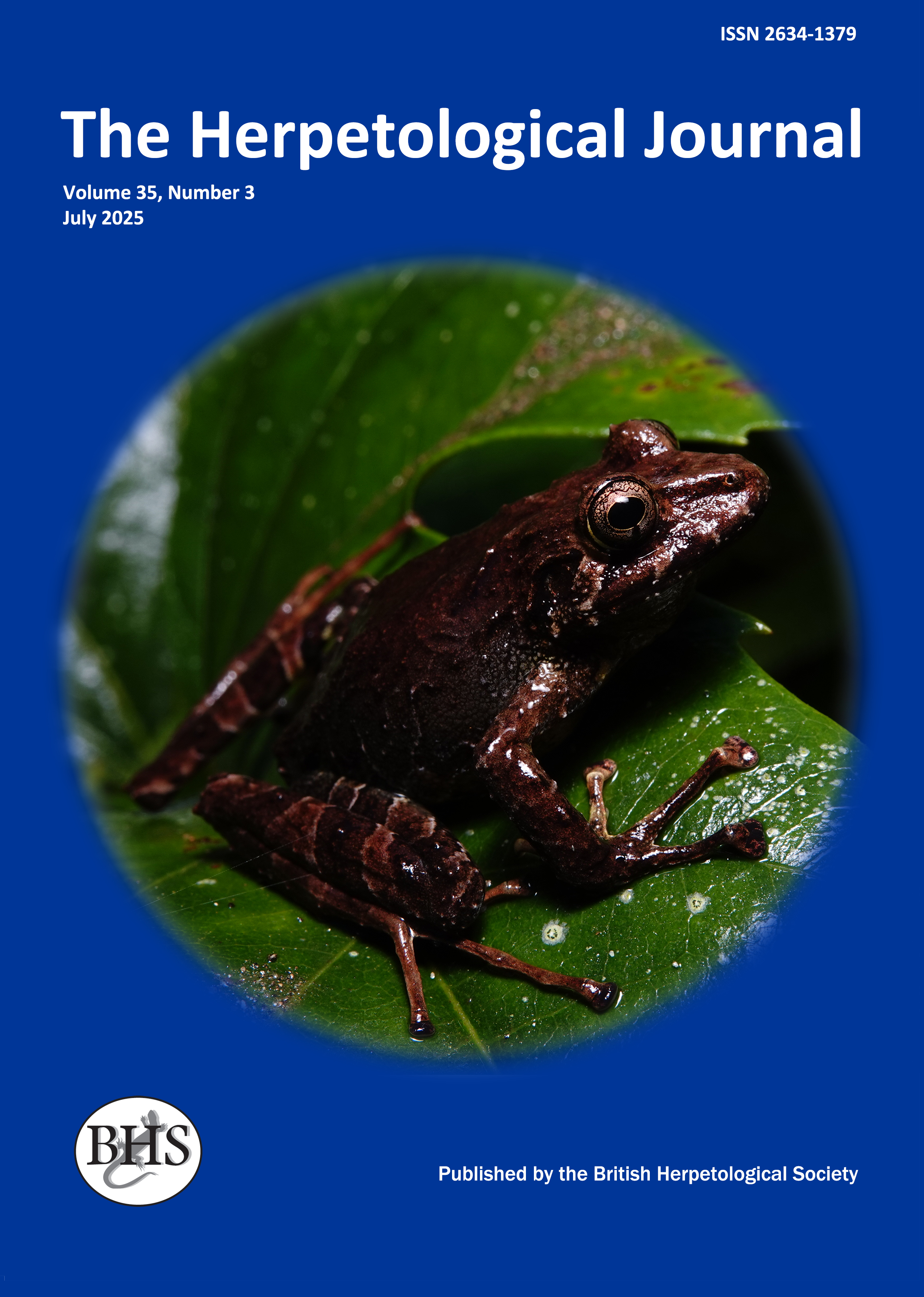
The Herpetological Journal
The Herpetological Journal is the Society's prestigious quarterly scientific journal. Articles are listed in Biological Abstracts, Current Awareness in Biological Sciences,Current Contents, Science Citation Index, and Zoological Record.
ISSN 0268-0130
2021 Impact Factor from Clarivate for the Herpetological Journal is 1.194, an increase of 0.332 from 2020.
pdf 05. A ring-species or a ring of species? Phylogenetic relationship between two treefrog species around the Yellow Sea: Dryophytes suweonensis and D. immaculatus
965 downloads
Open Access
pp. 160-170
Authors: Amaël Borzée, Sungsik Kong, Chelsea Didinger, Hoa Quynh Nguyen & Yikweon Jang
Abstract: Phylogenetic patterns due to glaciation are still understudied in North East Asia (NEA). Furthermore, the effects of the Last Glacial Maximum on phylogenetic patterns are less explicit in NEA than for other regions of the northern hemisphere due to topographically homogenous landscapes in general. Here, we aim to assess the phylogenetic status of the Dryophytes suweonensis and D. immaculatus treefrog clades. We used concatenated partial mitochondrial 12S and 16S gene fragments, with a combined length of 678 bp for D. suweonensis (n = 32) and D. immaculatus (n = 5), collected from the Republic of Korea and downloaded from GenBank (originating from the People’s Republic of China). Dryophytes suweonensis formed an apparently monophyletic clade whereas D. immaculatus was divided in two clades. Our results also demonstrated the continuous genetic variation through haplotypes forming a ring around the Yellow Sea. It is therefore difficult to conclude on either a ring-species or a ring of species around the shallow Yellow Sea, which acted as a land-bridge several times during recent geological times. We recommend the use of other data such as call characteristics and morphology to determine the species or sub-species status of these two clades.
Key words: Dryophytes suweonensis, Dryophytes immaculatus, species divergence, Hylidae, Yellow Sea

